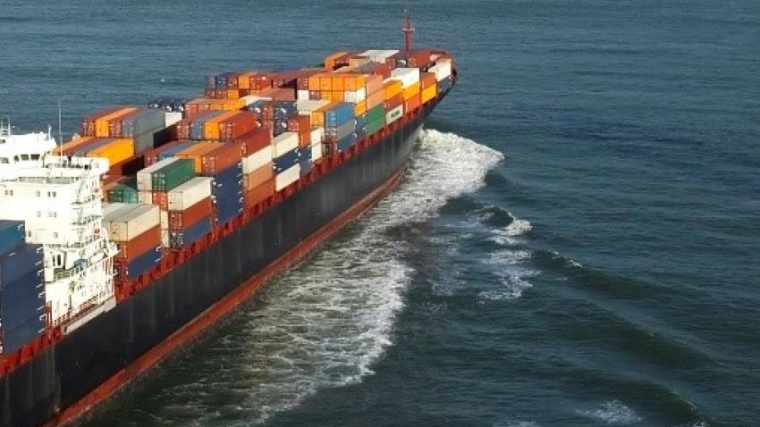
New Zealand's March year current account deficit weighed in at $27.6 billion, representing 6.8% of the gross domestic product (GDP), according to Statistics NZ.
This deficit was $5.4 billion lower than the same time a year ago, when it was $33 billion and equal to 8.5% of GDP.
A deficit means a country spends more abroad than it earns. Its size compared to GDP shows its significance in the context of NZ's overall economy.
In the March 2024 quarter, the quarterly current account deficit rose to $7.3 billion, up $300 million from the December quarter.
The seasonally adjusted services deficit increased by $1.1 billion in the same time period while exports of services dropped by $900 million.
Stats NZ said this was mainly due to a decline in travel exports – including spending by international visitors while in New Zealand.
Paul Pascoe, a senior manager at Stats NZ said the seasonal peak in visitor spending was “less pronounced” than it has been in the past.
“Once seasonal factors were removed, the adjusted visitor spending fell,” he said.
According to Stats NZ, a seasonally adjusted time series helps tit see the “underlying picture” over a long period by removing seasonal changes.
Stats NZ said its continuing to review how it adjusts for seasonal patterns after a period of “significant disruption” during Covid.
In March, the seasonally adjusted goods deficit narrowed by $393 million to $2.5 billion. Both imports and exports increased by $964 million and $571 million, respectively.
Goods exports were driven by fruit, dairy, and logs and wood products while goods imports ramped up from consumption goods like clothing.
“Even though the goods deficit narrowed slightly this quarter, goods, services, and primary income have all been in deficit since the December 2020 quarter,” Pascoe said.
NZ's net international investment position, representing the difference between the country’s financial assets and liabilities with the rest of the world, decreased to $199.1 billion in the March quarter representing 48.7% of GDP. This was down from $210.3 billion (52% of GDP) in the December 2023 quarter.
“In the March 2024 quarter, the increase in New Zealand’s international assets was mainly due to a combination of strong global stock market performance and a depreciation of the New Zealand dollar against major currencies,” Pascoe said.
In 2022, New Zealand spending overseas hit a record high due to bad weather, labour shortages, and strict border rules hurting exports, while robust demand fueled imports.
This all caused the deficit to hit a historic high of $33.4 billion, or 8.8% of GDP that year.
Since then, the deficit has gradually narrowed with the recovery of the tourism sector and higher interest rates dampening consumer demand for imported goods.
ANZ Senior Economist Miles Workman said in a note that the 6.8% annual current account deficit was wider than ANZ’s expectation of 6.7%.
It was also “much wider” than the latest forecasts from the Reserve Bank of New Zealand (RBNZ) and NZ Treasury.
The RBNZ had predicted an annual account deficit of 6.4%, while NZ Treasury had forecast 6.3%.
“While New Zealand’s external position is improving, it’s still too far out of balance to call sustainable. Progress is expected to continue, but the economy remains vulnerable to a wide range of possible shocks (eg drought, global wobbles) that could keep us in unsustainable territory for longer,” Workman said.
“Combined with a soft growth outlook and wider-for-longer fiscal deficits, risks to our sovereign credit ratings are building.”
8 Comments
If all the Aussie banks left their profits in NZ we would be ok?
Not even close, the the Aussie banks have yearly profit of maybe 7 billion or so, which is around a quarter of the yearly account deficit. Some of that will also go to NZ shareholders. Would still help a lot if we could keep that local.
If the Aussie banks took their capital to Australia would we be OK?
Imports are bound to increase in the upcoming years with such a high influx of migrants into the country.
Maybe not at the same rate per capita as it has in recent years, given the average purchasing power will shrink with a faltering economy, but will rise on an aggregate level.
Given that the "risks to our sovereign credit ratings are building", the RBNZ cannot afford to allow another credit boom fueling non-productive consumption (higher imports). The situation is serious.
We must find a way to direct credit towards the productive sector (replacing imports), and away from speculative investment in non-productive assets (existing houses).
One way is to tighten the macroprudential limits applying to purchases of existing houses ( lower LVRs < 65%, and lower DTIs < 5, with exceptions only for housing construction)
"the RBNZ cannot afford to allow another credit boom..." Spot on, and why any thought of dropping the OCR needs to be put to bed, publicly, by the RBNZ, until such time as we have made fundamental changes to where our national capital is deployed. And as you suggest, reinvigorating property price speculation is not it.
"Spot on, and why any thought of dropping the OCR needs to be put to bed"
You're aware that a higher OCR actually increases NZ's money's exit to overseas lenders? Right?
(Apparently not.)
Exactly why we need more promotion of are primary industries = export $$$$$ Mr Jones is on the right page
Some new Mining operations ..maybe some O& Exploration= production in time
Farming + Fishing + Forestry -- need less BS red tape and Regulations + support to drive investment + Growth in operations
All these major Primary employees help fuel downstream manufacturing/engineering ...
More high-paid blue-collar workers less white collar bureaucrats/consultants/sales

We welcome your comments below. If you are not already registered, please register to comment
Remember we welcome robust, respectful and insightful debate. We don't welcome abusive or defamatory comments and will de-register those repeatedly making such comments. Our current comment policy is here.